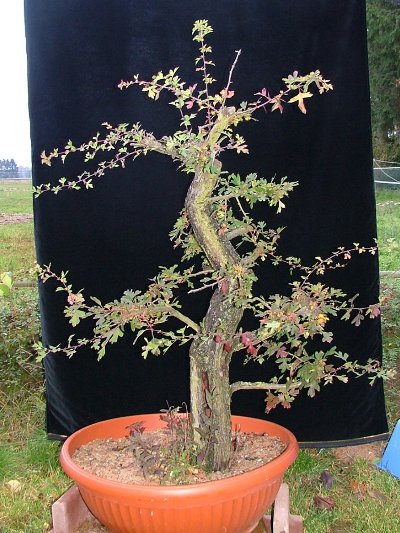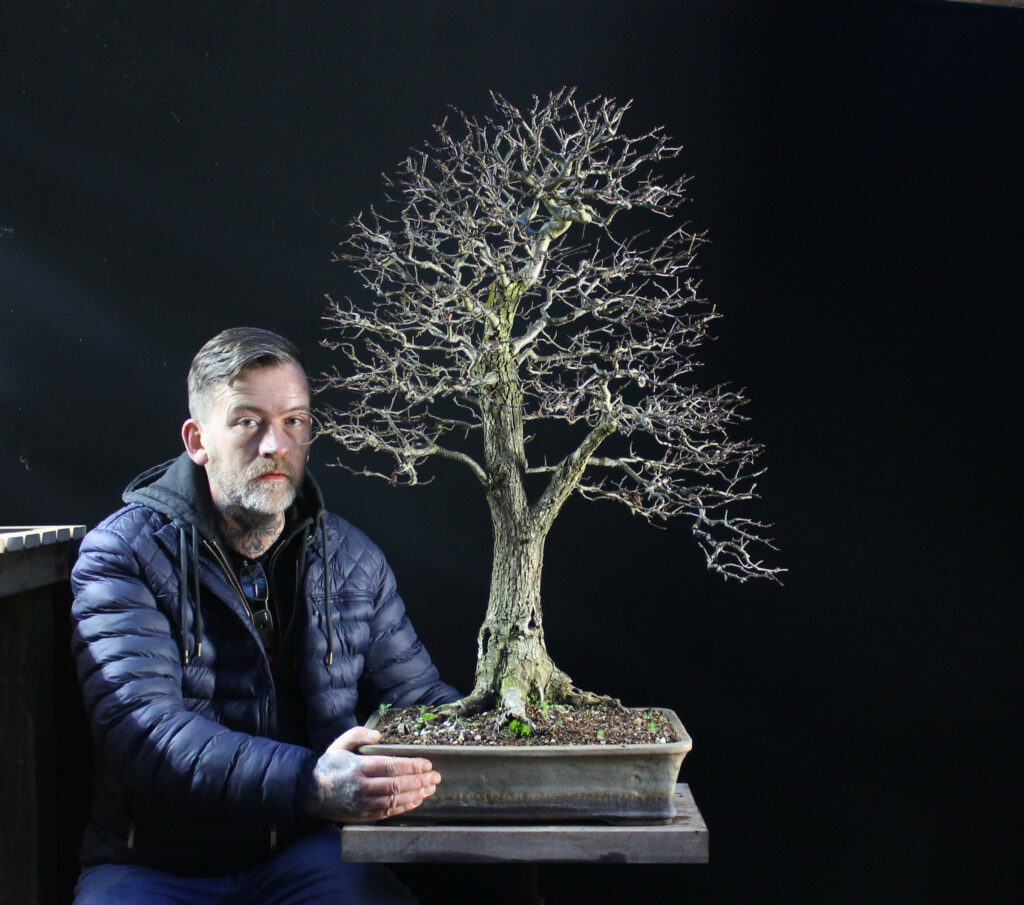Hawthorn bonsai trees thrive with regular watering, sufficient sunlight, and proper pruning. They prefer well-draining soil and consistent care.
Hawthorn bonsai trees are a popular choice for bonsai enthusiasts due to their hardy nature and beautiful appearance. These trees can adapt well to various climates, making them relatively easy to care for. Regular watering is crucial, but avoid overwatering to prevent root rot.
Ensure the bonsai receives plenty of sunlight to promote healthy growth. Pruning is essential to maintain its shape and encourage new growth. Use well-draining soil to prevent waterlogging and support root health. With consistent care and attention, your Hawthorn bonsai can flourish, offering a stunning and rewarding addition to your bonsai collection.
Introduction To Hawthorn Bonsai
Hawthorn bonsai trees require specific care to thrive beautifully. These resilient trees need well-drained soil and regular pruning. Ensure adequate sunlight and protect them from extreme weather conditions.
Brief History
The Hawthorn bonsai tree has a rich history. It originates from Europe and Asia. People have cultivated it for centuries. It symbolizes strength and endurance. Many cultures see it as a protective tree. Ancient people believed it had magical properties.
Unique Characteristics
Hawthorn bonsai trees have tiny leaves. These leaves are very dense. The tree blooms with beautiful white or pink flowers. Small, red fruits appear after the flowers. These fruits add to its charm. The bark is rough and grey, giving it an aged look. The tree can live for many years with proper care.

Credit: www.youtube.com
Choosing The Right Hawthorn Species
Selecting the right Hawthorn species ensures optimal growth and beauty for your bonsai tree. Different species offer unique characteristics, enhancing your bonsai experience. Proper species choice makes a significant impact on care and maintenance.
Popular Varieties
The Common Hawthorn is a great choice. It has lovely white flowers. The Midland Hawthorn is another option. It has deep red fruits. The Paul’s Scarlet variety blooms with pink flowers. Each variety offers unique beauty.
Climate Considerations
Hawthorn trees love sunny spots. They need well-drained soil. These trees can handle cold weather. Hot climates may stress them. Proper watering is crucial. Ensure the tree gets enough water. Avoid waterlogging the soil. This helps the tree thrive.
Optimal Soil And Pot Selection
Choosing the right soil mix and pot is crucial for Hawthorn Bonsai tree health. Well-draining soil prevents root rot, while a shallow pot enhances root spread. Proper selection ensures optimal growth and stability.
Soil Composition
The right soil is very important for your Hawthorn bonsai. Use soil that drains well. A good mix is 70% akadama, 20% pumice, and 10% lava rock. This mix keeps the roots healthy and helps the tree grow.
Choosing The Right Pot
Picking the right pot is also important. The pot should have good drainage holes. It should be deep enough to hold the roots. Choose a pot that is not too big or too small. The color of the pot should match the tree.
Watering Techniques
Proper watering ensures healthy growth for your Hawthorn Bonsai tree. Keep the soil consistently moist without waterlogging it. Always water thoroughly until it drains from the bottom.
Watering Frequency
Water your Hawthorn bonsai tree regularly. The soil should be moist but not soggy. Check the soil daily to ensure it’s not too dry or too wet. In summer, water more often. In winter, water less frequently. Never let the soil dry out completely.
Signs Of Overwatering
Overwatering can harm your bonsai tree. Look for yellowing leaves and soft, mushy roots. These are signs of too much water. Fungus or mold on the soil is another bad sign. Ensure proper drainage to prevent root rot. Use a well-draining soil mix.
Pruning And Shaping
Pruning and shaping are essential for maintaining a healthy Hawthorn Bonsai tree. Regular trimming promotes growth and helps achieve the desired aesthetic. Careful shaping ensures the tree develops a balanced structure.
Basic Pruning Tips
Start by removing dead or weak branches. Use sharp scissors to make clean cuts. Cut above a leaf node to encourage new growth. Always prune in the growing season for best results. Avoid cutting too much at once to prevent shock.
Advanced Shaping Techniques
Wiring helps shape the bonsai tree. Wrap the wire around branches gently. Bend branches slowly to avoid breaking. Remove the wire after a few months to check the shape. Repeat the process if needed. Use guy wires for thicker branches.

Credit: www.bonsaiempire.com
Fertilization Strategies
Use organic fertilizers like compost or manure for Hawthorn bonsai trees. These fertilizers release nutrients slowly. This helps the tree grow strong. Chemical fertilizers are also an option. They provide nutrients quickly. Use them sparingly to avoid damage.
Fertilize the tree once a month during the growing season. This is usually from spring to early fall. Reduce feeding in winter. The tree rests during this time. Avoid over-fertilizing. It can cause leaf burn and other issues.
Pest And Disease Management
Aphids often attack Hawthorn bonsai trees. These pests suck the sap from the leaves. This can weaken the tree. Spider mites are another common problem. They cause yellowing leaves and webbing. Caterpillars might also chew on the leaves. Regular inspection is key. Spotting pests early helps in managing them.
Fungus is a big threat to bonsai trees. Good air circulation helps prevent fungal infections. Watering the tree at its base can reduce leaf wetness. This also lowers the risk of mold. Removing dead leaves quickly is important. This keeps the tree healthy and strong. Pruning the tree allows light to reach all parts. This helps in preventing diseases.

Credit: bonsai4me.com
Seasonal Care Tips
Cover the Hawthorn Bonsai tree with a burlap sack. This keeps it safe from cold winds. Bring the tree indoors if temperatures drop below 20°F. Ensure the tree gets some sunlight indoors. Water the tree sparingly during winter. Overwatering can harm the roots. Check the soil moisture every week.
Place the tree in partial shade during summer. This prevents leaf burn. Water the tree daily but avoid waterlogging. Trim new shoots to maintain shape. Pests like aphids can attack in summer. Use insecticidal soap to protect the tree. Fertilize the tree once a month to promote growth.
Repotting Guidelines
Repot your Hawthorn Bonsai Tree every 2-3 years in early spring to ensure healthy root growth. Use well-draining soil and prune the roots carefully to maintain the tree’s vigor and structure.
When To Repot
Repot your Hawthorn bonsai every two to three years. The best time to repot is in early spring. The tree is still dormant then. Always check the roots for any signs of rot. Trim them if necessary.
Repotting Steps
Follow these steps for repotting your Hawthorn bonsai:
- Remove the tree gently from its pot.
- Trim about one-third of the roots.
- Prepare a new pot with fresh soil.
- Place the tree in the new pot.
- Water it thoroughly after repotting.
Common Challenges And Solutions
Hawthorn bonsai trees may have slow growth. Ensure they get enough sunlight. Use good soil and fertilizers. Water them well but not too much. Over-watering can cause root rot. Keep an eye on pests like aphids. These can harm the tree. Prune the tree to keep it healthy. A well-pruned tree grows better.
Yellow leaves can mean too much water. Reduce watering if this happens. Brown leaves might mean too little water. Check the soil often. If the leaves have spots, it might be a disease. Use a safe fungicide. Always remove dead leaves and branches. This helps the tree stay strong.
Conclusion
Caring for a Hawthorn Bonsai Tree requires attention and dedication. Proper watering, pruning, and sunlight ensure healthy growth. Regular checks for pests and diseases keep it thriving. With these steps, your Hawthorn Bonsai Tree will flourish beautifully, enhancing your living space.
Enjoy the rewarding experience of nurturing this stunning bonsai.

